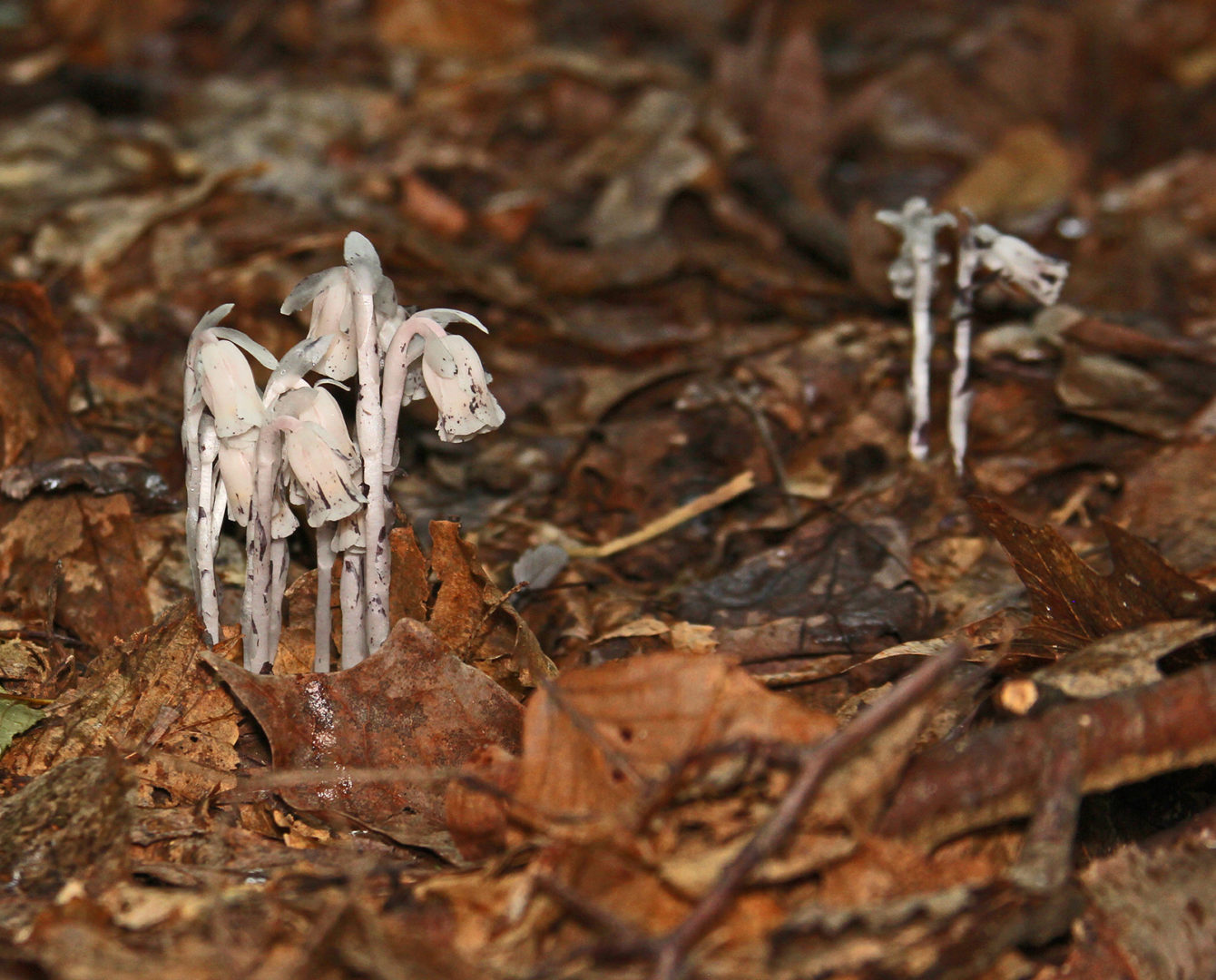Even a casual woodland walker will quickly notice the odd-looking white plants poking up through the leaf litter at this time of year.
Their bleached color often leads people to mistake them for some sort of fungi, but a closer inspection will reveal that they are topped with flowers rather than spore-producing structures.
The unusual plants are Monotropa uniflora, or simply “Indian pipes” for the less scientifically inclined. Other common names for this plant include ice plant, ghost flowers, ghost pipes, corpse plant, eyebright and convulsion weed.
Indian pipe is a member of the heath family — related to mountain laurel, rhododendron, cranberry, wintergreen, blueberry, azalea and another non-green plant called pinesap, rather than the fungi.
In the book “Cherokee Plants,” by Mary Chiltoskey, a Cherokee legend sheds light on the plant’s unusual name. According to the legend, several Native American chiefs spent seven days arguing over hunting and fishing territories. They smoked pipes during the quarreling, but the dispute was never resolved.
The Great Spirit was displeased and turned the old chiefs into the white, pipe-shaped plants as a reminder to all that pipes should only be smoked as a sign of peace after a dispute is settled.
Indian pipes are found in the very dense, shaded forest — never in full sun. They favor rich, moist soil with lots of decaying organic matter. They are often found growing near American beech trees, but not always. The possible relationship between Indian pipes and beech has not been documented. Sub-surface fungi are necessary for their life.
Indian pipes can be found in temperate North America, the northern regions of South America, as well as in some areas of Europe and Asia.
A cluster of Indian pipes emerges from the shaded forest floor as pencil-thin waxy stems. Each three-to-nine-inch stalk has short clinging scales and a turned-down flower at the top. The flower straightens as the plant grows taller. The entire plant is snow white and gradually takes on a pink, golden or gray color as it ages, eventually turning black when it dies.
It is likely that the flowers are downturned before pollination so that their nectar is not diluted by rainwater. The blossom of Indian pipe is considered a complete flower, because it contains both male (stamens) and female (stigma) parts.
The white, bell-shaped bloom is pollinated by various species of flies and bees, but mostly by bumble bees. Once the flower is pollinated, it develops into a seed capsule that will release wind-blown seeds later in the summer.
Most flowering plants survive by photosynthesis — using the sun’s energy to chemically translate carbon dioxide and water into a food supply as well as building blocks for growth. The green pigment chlorophyll is the key to this translation and, therefore, almost all flowering plants are green. Mushrooms and other fungi lack the green pigment and so do Indian pipes and a very few other flowering plant species.
It was long believed that Indian pipes were saprophytes — deriving their nutrition from decayed organic matter — but current findings suggest that they are one of the many plants discovered to be obtaining energy through a complex mycorrhizal relationship. The roots of Indian pipes are connected with fungal mycelium, which in turn are connected to the roots of photosynthetic plants, often beech. Therefore, Indian pipes get their energy indirectly from other green plants. That makes this “ghost plant” an mycoheterotroph.
Most mycoheterotrophs have been found to associate with fungi belonging to the family Russulaceae, with 1,900 known species worldwide. Maybe as a coincidence, or maybe not, the ghost pipes photographed for this column were growing near red-capped Russula emetica mushrooms — a member of that family.
Although Indian pipes reproduce by seeds, their spread is limited by the necessity to form this underground partnership with a specific fungi. They are visible any time from mid-summer through early autumn, particularly when the soil is damp following a good rain.
An extract from Indian pipes has been traditionally used to treat a wide range of health problems. These include eye disorders, nervous conditions, warts, fainting spells and colds. An extract will kill certain bacteria, but it might be toxic to humans as well. Its use is no longer recommended.
Mark Nale writes about the outdoors for The Centre County Gazette. This column appears in the July 22-28 edition of The Gazette.



